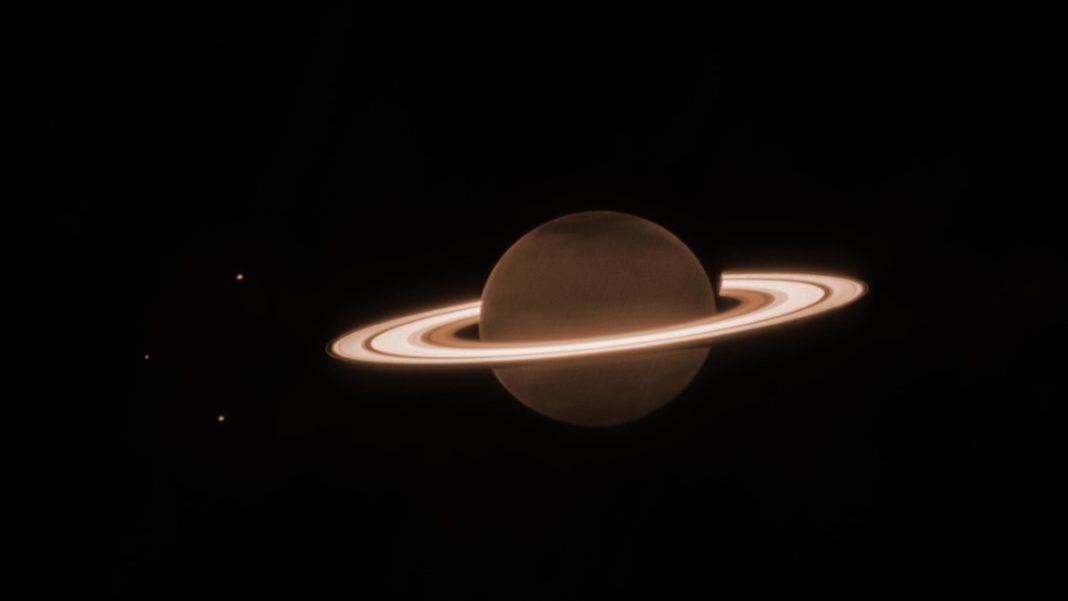UNITED STATES: Saturn, the enigmatic gas giant bedecked with its mesmerizing concentric rings, has long confounded astronomers. A recent study, leveraging data gleaned from NASA’s Cassini mission spanning 13 years, may have unravelled one of Saturn’s enduring mysteries—the genesis of its iconic rings.
The Cassini probe’s revelations indicated that the ring material, first discovered by Galileo Galilei in 1610, comprises exceptionally pure and untainted icy fragments.
This discovery suggested that Saturn’s captivating rings are relatively youthful, just a few million years old, implying a far more subdued appearance for the planet over most of its 4.5-billion-year existence.
Collaborators from NASA and the University of Durham ventured a bold hypothesis: Saturn’s rings emerged from a collision between two ancient icy moons. Employing potent supercomputers, they simulated nearly 200 scenarios of such an event.
The outcomes unveiled that a collision between moons akin in size to Saturn’s current Dione and Rhea might account for the existence of these majestic rings.
Vincent Eke, an Associate Professor at Durham University, remarked, “We tested a hypothesis for the recent formation of Saturn’s rings and have found that an impact of icy moons can send enough material near Saturn to form the rings that we see now.”
Although predominantly composed of ice, Saturn’s icy moons harbour rocky cores. Simulations affirmed that after a collision, the icy fragments and rocky elements would disperse differently, leading to the formation of new moons from the rocks while the ice fragments would orbit closer to Saturn’s surface.
Rings can only form within the Roche limit, a boundary defined by the relative strengths of gravity and tidal forces. The simulations demonstrated that many hypothetical collisions would propel a substantial amount of ice into lower altitudes, while the rocks would amass in higher orbits.
Eke elucidated, “This scenario naturally leads to ice-rich rings because when the progenitor moons smash into one another, the rock in the cores of the colliding bodies is dispersed less widely than the overlying ice.”
Saturn’s ice-shrouded moons, particularly Enceladus, hold tantalizing prospects for scientists, possibly providing a habitat conducive to the emergence of life. While this study offers a crucial stride towards comprehending Saturn’s enigmas, much of the planet’s past remains shrouded in mystery.
Also Read: Enceladus Unveiled: Saturn’s Moon Holds the Secrets of Life



